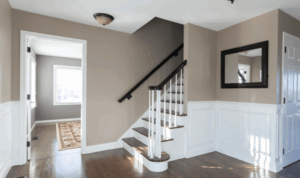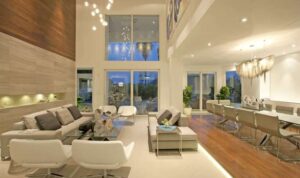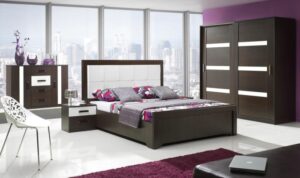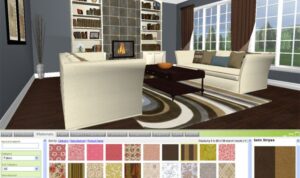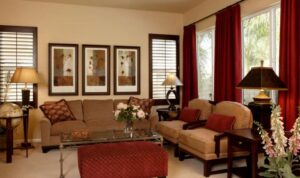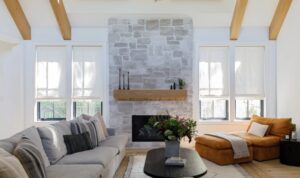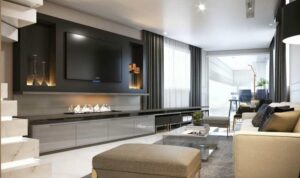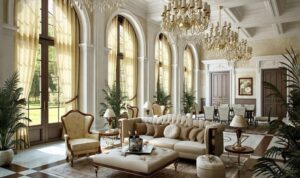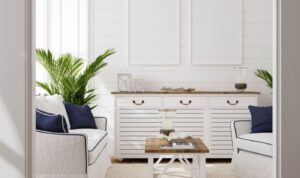Embark on a journey into the world of home interior design, where every corner tells a story and every color choice holds significance. From creating a cozy sanctuary to reflecting personal taste, the art of interior design is a powerful tool in shaping our living spaces.
Delve deeper into the elements that make up a well-designed home, from colors and textures to furniture arrangements that blend functionality with style.
Importance of Home Interior Design
Home interior design plays a crucial role in shaping the overall feel and ambiance of a living space. It goes beyond just aesthetics and can significantly impact the way we interact with our surroundings.
Well-designed interiors have the power to enhance the quality of life by creating functional, comfortable, and visually appealing spaces. A thoughtfully designed home can promote relaxation, productivity, and overall well-being.
Personal Style and Preferences
- Personal style and preferences are often reflected in the interior design choices made for a home. Whether it's a minimalist, modern, traditional, or eclectic style, the design elements used can showcase the homeowner's taste and personality.
- The color palette, furniture selection, decor items, and overall layout can all be tailored to align with individual preferences, creating a space that feels uniquely personal and inviting.
- For example, someone who loves nature may incorporate natural elements like wood, stone, and plants into their design, while a fan of bold colors may opt for vibrant accents and artwork to make a statement.
Elements of Interior Design
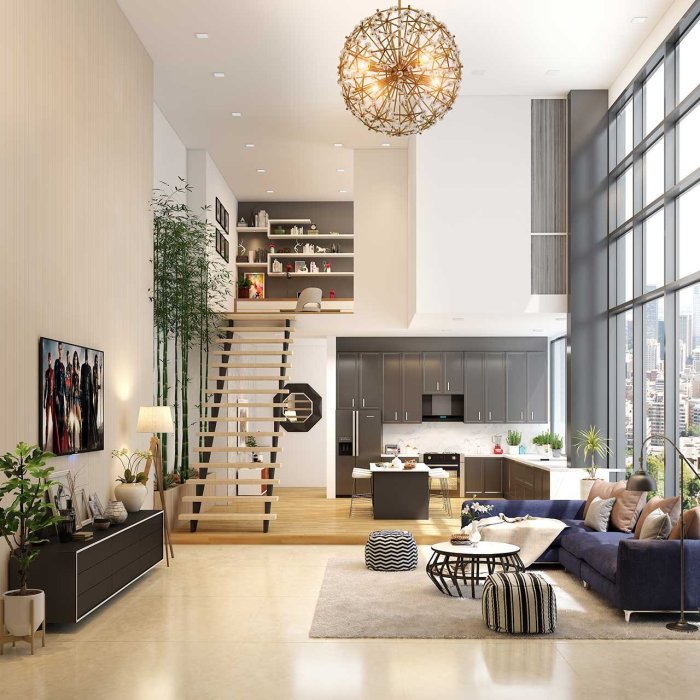
Interior design is a blend of art and science that involves various key elements to create a cohesive and visually appealing space. Let's explore the fundamental elements that play a crucial role in shaping the overall design of a home interior.
Color
Color is one of the most powerful tools in interior design as it sets the mood and tone of a space. Different colors evoke different emotions and can impact the perception of size and ambiance in a room. Warm colors like reds, oranges, and yellows create a cozy and inviting atmosphere, while cool colors like blues and greens promote a sense of calmness and relaxation.
Lighting
Lighting is essential in interior design as it not only illuminates the space but also highlights architectural features and enhances the overall ambiance. Proper lighting can make a room feel more spacious, cozy, or vibrant. Natural light is ideal for creating a welcoming and airy feel, while artificial lighting fixtures can be used to create specific moods and focal points.
Furniture
Furniture is not just functional but also a key element in interior design that contributes to the overall style and aesthetics of a space. The choice of furniture pieces, their arrangement, and scale can significantly impact the flow and functionality of a room.
Mixing different styles, shapes, and materials can add visual interest and personality to a space.
Accessories
Accessories such as artwork, rugs, pillows, and decorative items add the finishing touches to a room and tie the design elements together. They can be used to inject color, texture, and personality into a space, creating a cohesive and harmonious look.
Accessories also allow for easy updates and changes to refresh the interior design over time.
Textures and Patterns
Textures and patterns play a crucial role in interior design by adding depth, visual interest, and dimension to a space. Mixing textures like smooth, rough, shiny, or matte surfaces can create a rich and layered look. Patterns, whether bold or subtle, can add personality and style to a room, enhancing the overall design scheme.
Balance of Functionality and Aesthetics
Balancing functionality and aesthetics is key in interior design to ensure that the space not only looks beautiful but also serves its intended purpose. Each design element should contribute to both the visual appeal and practicality of the space. Striking the right balance between form and function ensures a well-designed and comfortable living environment.
Planning and Layout
When it comes to interior design, planning and layout play a crucial role in creating functional and aesthetically pleasing spaces. A well-thought-out layout can enhance the overall look and feel of a room while maximizing its efficiency and comfort.
Tips for Creating a Functional Layout
- Consider the function of the room: Before deciding on a layout, think about how the room will be used. This will help determine the placement of furniture and other elements.
- Measure the space: Take accurate measurements of the room to ensure that furniture pieces fit properly and there is enough space for movement.
- Create zones: Divide the room into different zones based on activities, such as a seating area, work area, or dining area. This will help define the purpose of each area.
- Focus on traffic flow: Arrange furniture in a way that allows for easy movement throughout the room without obstacles.
Importance of Space Planning and Furniture Arrangement
Space planning is essential for optimizing the functionality of a room. By carefully planning the layout and furniture arrangement, you can make the most of the available space and create a harmonious flow within the room. Proper furniture arrangement can also enhance the visual appeal of the space and improve comfort and usability.
Optimizing Natural Light and Ventilation
- Maximize natural light: Position windows strategically to allow ample natural light to enter the room. Light plays a crucial role in creating a welcoming and airy atmosphere.
- Choose light colors: Opt for light-colored walls, flooring, and furniture to reflect natural light and make the room feel brighter and more spacious.
- Promote ventilation: Ensure proper ventilation by incorporating windows that can be opened, using ceiling fans, or installing air vents. Good ventilation is essential for maintaining a healthy indoor environment.
Decorating Styles
When it comes to interior design, the decorating style you choose can greatly impact the overall look and feel of your home. Different styles can evoke various moods and aesthetics, so it's important to understand the characteristics of each style to create a space that reflects your personality and preferences.
Modern Style
Modern interior design is known for its clean lines, minimalism, and sleek finishes. It often incorporates a neutral color palette with pops of bold colors or metallic accents. Furniture pieces are usually sleek and simple, with a focus on functionality and open spaces.
Traditional Style
Traditional interior design is classic and timeless, featuring rich colors, ornate details, and elegant furnishings. It often includes dark wood finishes, intricate patterns, and luxurious fabrics like silk or velvet. Traditional spaces exude warmth and sophistication.
Minimalist Style
Minimalist interior design focuses on simplicity and functionality. It emphasizes clean, clutter-free spaces with a limited color palette and minimal decor. Furniture pieces are often sleek and geometric, creating a sense of calm and tranquility in the home.
Eclectic Style
Eclectic interior design blends various styles and influences to create a unique and personalized space. It often combines different textures, patterns, and colors to add visual interest and personality. Eclectic spaces are dynamic and full of character.
Blending Styles
To create a cohesive design that combines different decorating styles, consider focusing on a unifying element such as color, texture, or pattern. Mixing modern and traditional pieces, for example, can create a balanced and visually interesting look. Experiment with layering different styles to add depth and character to your home.
Using Colors and Patterns
When it comes to interior design, colors and patterns play a crucial role in creating the desired ambiance and atmosphere within a space. The choice of colors can greatly impact the mood and perception of a room, while patterns can add visual interest and depth to the overall design.
Impact of Colors on Interior Design
Colors have the power to evoke emotions, influence behavior, and set the tone for a room. Understanding the psychology of colors can help in choosing the right color scheme for different spaces within a home.
- Warm colors like red, orange, and yellow can create a cozy and inviting atmosphere, perfect for living rooms or dining areas.
- Cool colors such as blue, green, and purple have a calming effect and work well in bedrooms or home offices.
- Neutral colors like white, beige, and gray provide a versatile base and can be paired with bolder hues for added contrast.
Incorporating Patterns for Visual Interest
Patterns can add texture, depth, and personality to a room. When used strategically, patterns can enhance the overall design aesthetic and create a cohesive look.
- Consider mixing different scales of patterns to avoid overwhelming the space.
- Use patterns on accent pieces like throw pillows, rugs, or curtains to introduce visual interest without overpowering the room.
- Pair bold patterns with solids or subtle prints to create a balanced and harmonious look.
Closure
As we conclude this exploration of home interior design, remember that the way we design our living spaces goes beyond aesthetics—it impacts our mood, productivity, and overall well-being. Let your creativity flourish as you transform your house into a place that truly feels like home.
FAQ Resource
How does interior design affect our quality of life?
Well-designed interiors can enhance our mood, productivity, and overall well-being by creating spaces that are both functional and visually appealing.
What are some tips for optimizing natural light in interior spaces?
To maximize natural light, consider using light-colored curtains, strategically placing mirrors, and keeping windows unobstructed from furniture.
Can different interior design styles be combined to create a cohesive look?
Absolutely! Mixing styles like modern and traditional or minimalist and bohemian can result in a unique and personalized design aesthetic.

